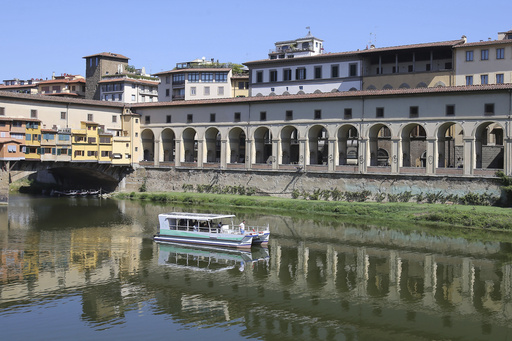
Florence, Italy – For centuries, the Vasari Corridor, a raised passageway constructed in the 16th century, was a privilege exclusive to the dukes and nobles of the time. Recently, after an extensive restoration that lasted eight years, this historic corridor has opened its doors to the public. It links the renowned Uffizi Galleries with the former home of the Medici family, a powerful dynasty in Florence’s history.
The corridor, which spans approximately 750 meters (about 820 yards), connects the Uffizi Museums to the grandeur of Palazzo Pitti. It elegantly arcs over the famous Ponte Vecchio, providing a distinctive vantage point above the quaint jewelry shops that line the banks of the Arno River. Originally constructed for the Medici family, the corridor served as a secretive route, allowing them to navigate the city’s streets safely and discreetly.
According to Simone Verde, the director of the Uffizi Gallery, the reopening of the corridor marks an important moment, as it bridges two significant art collections—one at the Uffizi Palace and the other at the Pitti Palace and Boboli Gardens—making them accessible to all visitors. The corridor had been closed since 2016 while renovations were underway to enhance safety measures and accessibility for guests.
As of December 21, guests will have the opportunity to enter the Gallery of Statues and Paintings at the Uffizi Museum, meander through the artistic depths of Ponte Vecchio, and eventually emerge in the lush expanse of the Boboli Gardens. This journey includes the chance to view the Torre dé Mannelli and offer unique perspectives on the Church of Santa Felicita, allowing for stunning panoramic views of Florence.
The renovation, which involved an investment of around 10 million euros, emphasizes the importance of accessibility. Features such as ramps, footbridges, lifts, and an upgraded energy-efficient LED lighting system have been incorporated, along with a comprehensive video monitoring setup for security. This initiative aims to create a viable alternative route for tourists, alleviating some of the pressures caused by overtourism.
Verde expressed optimism regarding the corridor’s role in transforming a challenge into an opportunity. He envisions it as a means for visitors to understand the interconnectedness of the Medici and Lorena collections while exploring the vibrant city. Each year, the stunning Renaissance art and architecture of Florence draw millions of tourists, but the increasing volume of visitors poses challenges, a concern echoed in many of Italy’s other historically rich cities.

